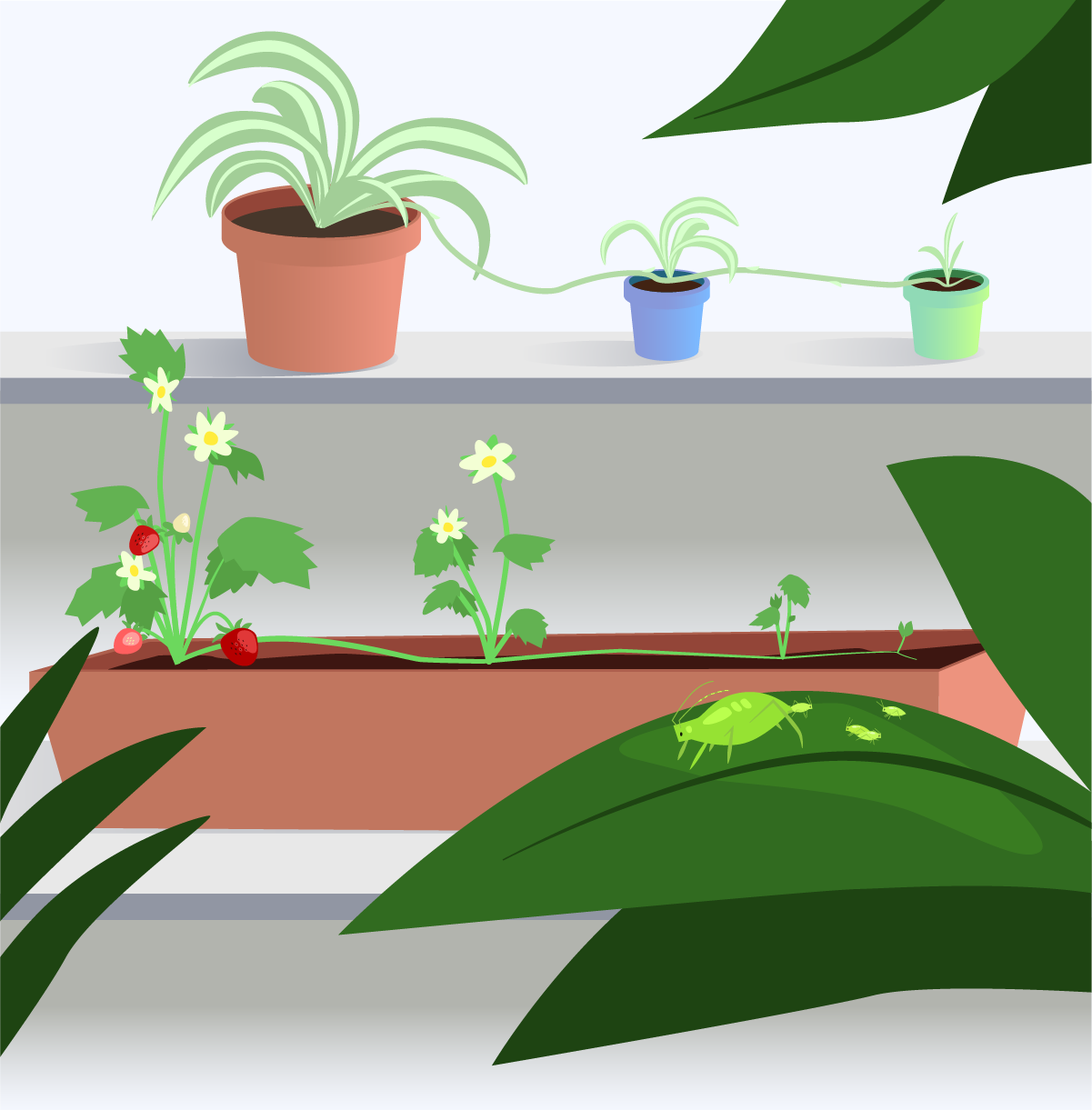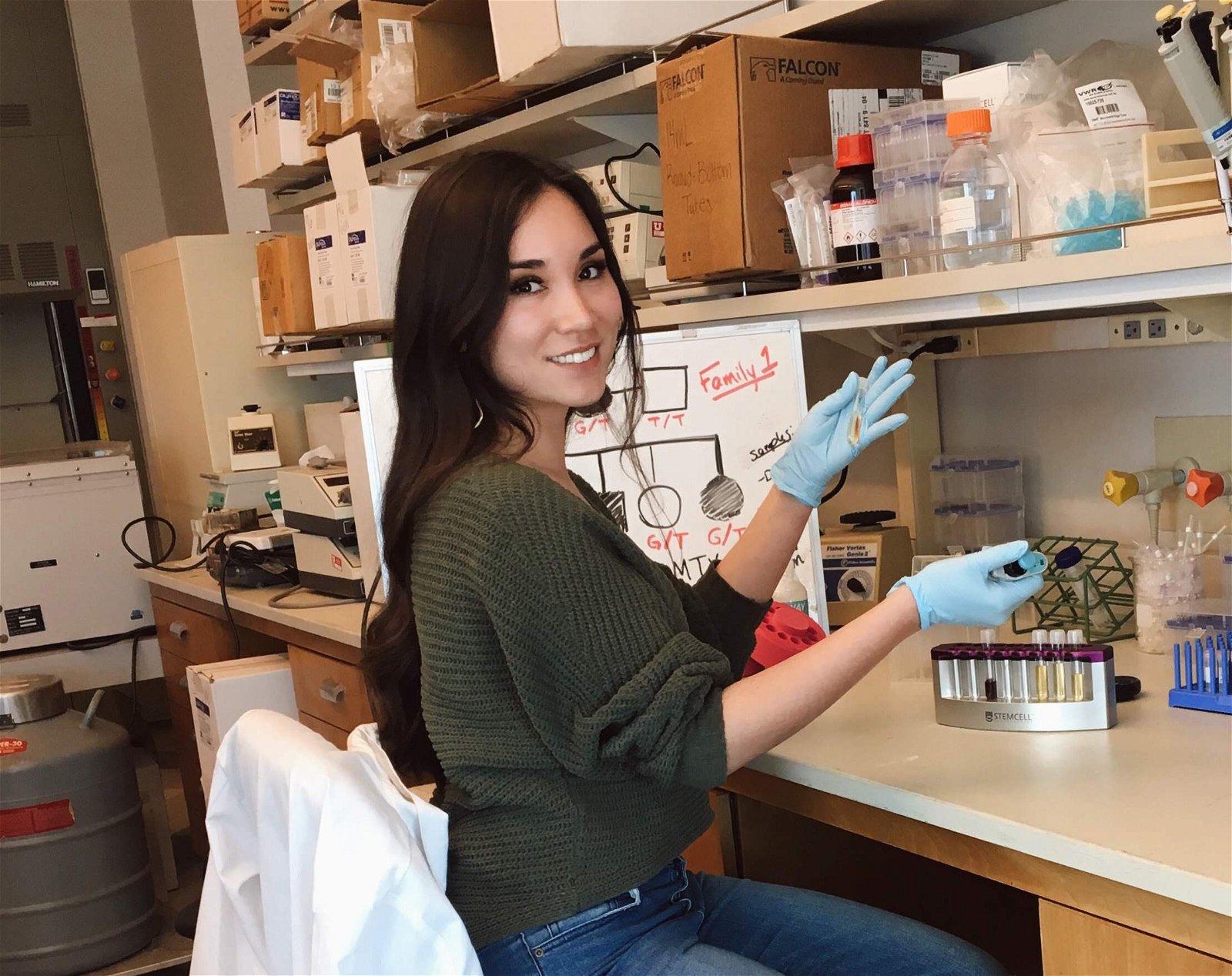
Asexual reproduction is a way for living things to make genetically identical copies of themselves. Single-celled organisms like bacteria and protists do it by copying their genes and splitting in two, like the video shows. But there are other ways to do it.
Spider plants and strawberries send out long stems called runners that each grow a new plant at their tip. This is just one of the ways plants clone themselves.
Aphids are sap-sucking insects that clone themselves through a process called parthenogenesis. Females in some aphid species give birth to genetically identical daughters who are already pregnant! A single female can make a giant clone army that can take over a plant in a matter of weeks. Other animals reproduce asexually by breaking into pieces or growing a little bud out of their side, which eventually breaks free.
Many living things can reproduce both ways—sexually and asexually. For example, spider plants and strawberries also grow flowers, which they use for sexual reproduction. And most aphid species can also reproduce with a partner. Usually this happens in the fall, and the females then lay eggs that can safely survive the winter.


